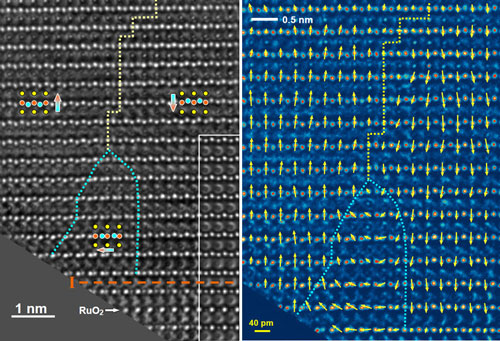 Scientists from the Forschungszentrum Juelich and the Max Planck Institute of Microstructure Physics in Halle have discovered the basis for the next generation of memory devices. In a ferroelectric material, they have, for the first time, been able to observe directly how dipoles, which store the information in this material, continuously rotate and therefore may be organised in circular structures.
Scientists from the Forschungszentrum Juelich and the Max Planck Institute of Microstructure Physics in Halle have discovered the basis for the next generation of memory devices. In a ferroelectric material, they have, for the first time, been able to observe directly how dipoles, which store the information in this material, continuously rotate and therefore may be organised in circular structures.
Mar 28th, 2011
Read more
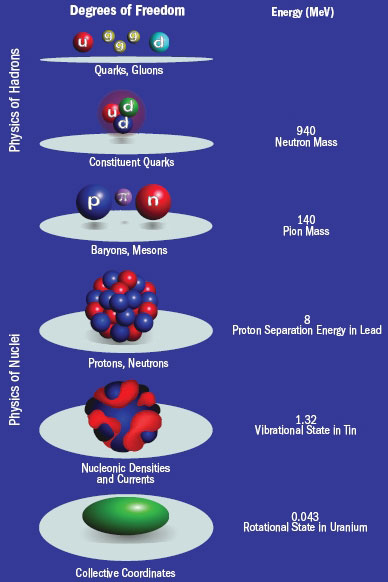 Find out about this collaboration's efforts and accomplishments toward completing a portrait of the nuclear landscape.
Find out about this collaboration's efforts and accomplishments toward completing a portrait of the nuclear landscape.
Mar 28th, 2011
Read more
The spin of individual atoms in an optical crystal can be modified so that they can serve as quantum bits or explain unsolved quantum phenomena.
Mar 28th, 2011
Read more
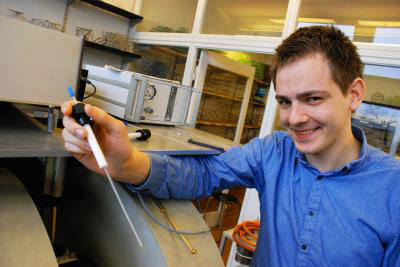 Magnets made of just a few metallic atoms could make it possible to build radically smaller storage devices and have also recently been proposed as components for spintronics devices. Now a chemistry student at the University of Copenhagen has demonstrated that molecular magnets using the metals ruthenium and osmium retain their magnetic properties at higher temperatures.
Magnets made of just a few metallic atoms could make it possible to build radically smaller storage devices and have also recently been proposed as components for spintronics devices. Now a chemistry student at the University of Copenhagen has demonstrated that molecular magnets using the metals ruthenium and osmium retain their magnetic properties at higher temperatures.
Mar 28th, 2011
Read more
InTech, the Open Access publisher, has announced the launch of a new Open Access journal, "Nanomaterials and Nanotechnology". The quarterly journal will be available online for free full-text download.
Mar 28th, 2011
Read more
The South Africa Department of Science and Technology has acquired a world-class High Resolution Transmission Electron Microscopy (HRTEM) that will push the frontiers of nanotechnology research.
Mar 28th, 2011
Read more
Fast, low-energy memory for MP3s, smartphones and cameras could become a reality thanks to University scientists.
Mar 28th, 2011
Read more
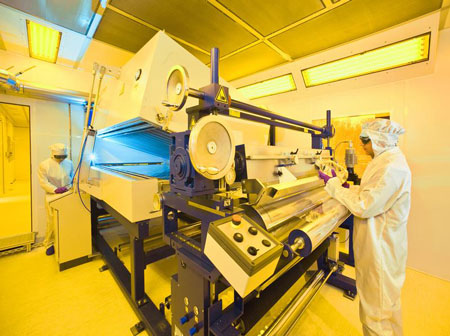 Dass Geckos oder Spinnen an Waenden entlanglaufen oder kopfueber an der Decke haengen, liegt an den besonders kleinen Oberflaechenstrukturen ihrer Fuesse. Das rasche Haften und problemlose Abloesen durch diese Strukturen inspiriert Wissenschaftler dazu, diese Faehigkeiten kuenstlich im Labor nachzustellen. Den Forschern am INM - Leibniz-Institut fuer Neue Materialien ist es gelungen, diese kuenstliche Struktur mit einem speziellen Verfahren auf Folien beliebiger Laenge mit einem knappen Meter Breite zu bringen.
Dass Geckos oder Spinnen an Waenden entlanglaufen oder kopfueber an der Decke haengen, liegt an den besonders kleinen Oberflaechenstrukturen ihrer Fuesse. Das rasche Haften und problemlose Abloesen durch diese Strukturen inspiriert Wissenschaftler dazu, diese Faehigkeiten kuenstlich im Labor nachzustellen. Den Forschern am INM - Leibniz-Institut fuer Neue Materialien ist es gelungen, diese kuenstliche Struktur mit einem speziellen Verfahren auf Folien beliebiger Laenge mit einem knappen Meter Breite zu bringen.
Mar 28th, 2011
Read more
CEA-Leti will present the outlook for the European electronics industry along with the latest developments for healthcare, energy, and information technologies at the 13th Leti Annual Review on the MINATEC campus in Grenoble, June 27-28, 2011.
Mar 28th, 2011
Read more
European and US scientists and policymakers as well as industry researchers met at a joint US-EU workshop to discuss environmental, health and safety (EHS) concerns related to nanomaterials and nanotechnology-based products.
Mar 28th, 2011
Read more
This online workshop on 'Nanomaterials for Biological Applications' will enable nanoscientists working in this field to meet and find out about each other's expertise and research interests.
Mar 28th, 2011
Read more
The addition of extremely small crystals to solid electrolyte material has the potential to considerably raise the efficiency of fuel cells. Researchers at TU Delft were the first to document this accurately.
Mar 28th, 2011
Read more
Zinkoxid-Nanopartikel, deren Oberflaeche mit organischen Saeuren beschichtet wurde, sind rund eine Zehnerpotenz groesser als herkoemmliche Photoinitiatoren. Dadurch sind sie unbeweglicher und werden wesentlich besser in den gehaerteten Druckfarben festgehalten.
Mar 28th, 2011
Read more
Looking at aeronautics, mechanical engineering or packaging industry - coating does improve materials or give them extra functions. At Hannover Messe (April 4th to 8th 2011) Fraunhofer will be showing procedures, materials and methods for analysis concerning surfaces at their booth in hall 6, booth H21.
Mar 28th, 2011
Read more
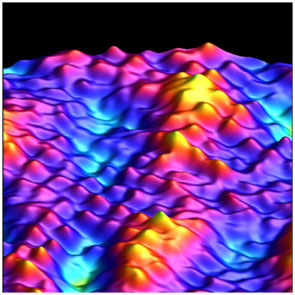 Researchers at the London Centre for Nanotechnology, in collaboration with the University of Geneva, Japan Science and Technology Agency and the University of Tokyo, have shown the first atomic resolution images of oxygen defects at a manganite surface, using ultra-high vacuum scanning tunnelling microscopy.
Researchers at the London Centre for Nanotechnology, in collaboration with the University of Geneva, Japan Science and Technology Agency and the University of Tokyo, have shown the first atomic resolution images of oxygen defects at a manganite surface, using ultra-high vacuum scanning tunnelling microscopy.
Mar 28th, 2011
Read more
A discussion of the current condition for theories of signal transduction in olfaction. One theory based on Luca Turin's hypothesis from 1996, holds promise; that an odorant's quantized vibrational mode (a phonon) may facilitate electron tunnelling which constitutes the recognition event in the nose. The novel mechanism is explored and explained.
Mar 28th, 2011
Read more
 Scientists from the Forschungszentrum Juelich and the Max Planck Institute of Microstructure Physics in Halle have discovered the basis for the next generation of memory devices. In a ferroelectric material, they have, for the first time, been able to observe directly how dipoles, which store the information in this material, continuously rotate and therefore may be organised in circular structures.
Scientists from the Forschungszentrum Juelich and the Max Planck Institute of Microstructure Physics in Halle have discovered the basis for the next generation of memory devices. In a ferroelectric material, they have, for the first time, been able to observe directly how dipoles, which store the information in this material, continuously rotate and therefore may be organised in circular structures. 




 Subscribe to our Nanotechnology News feed
Subscribe to our Nanotechnology News feed